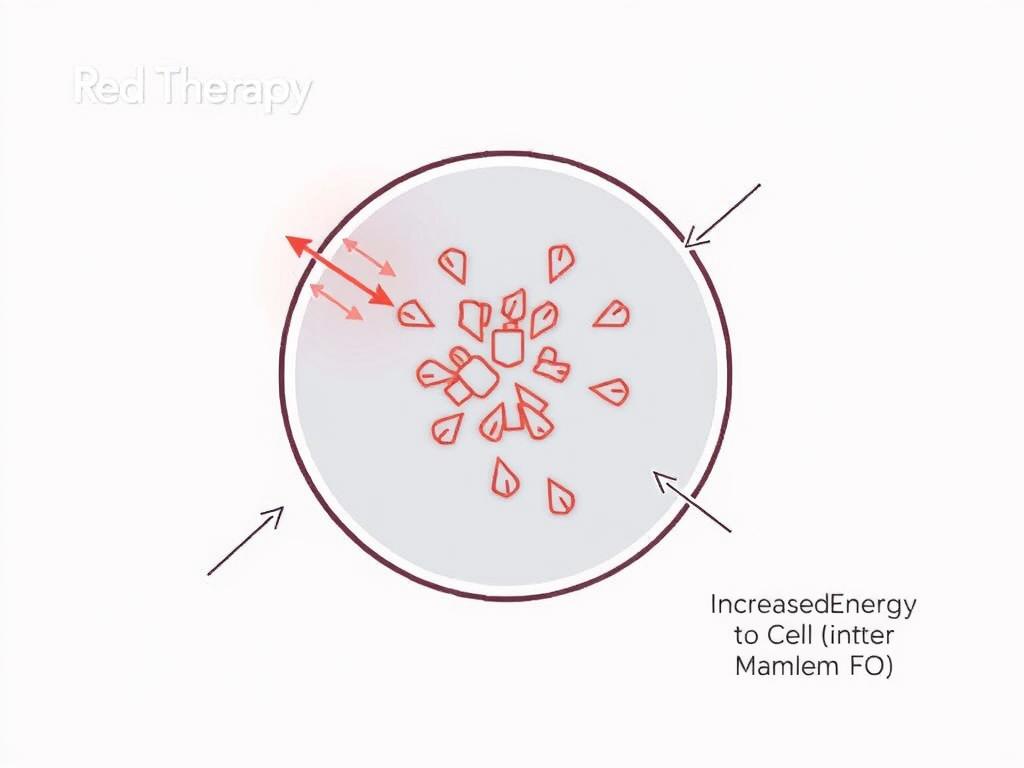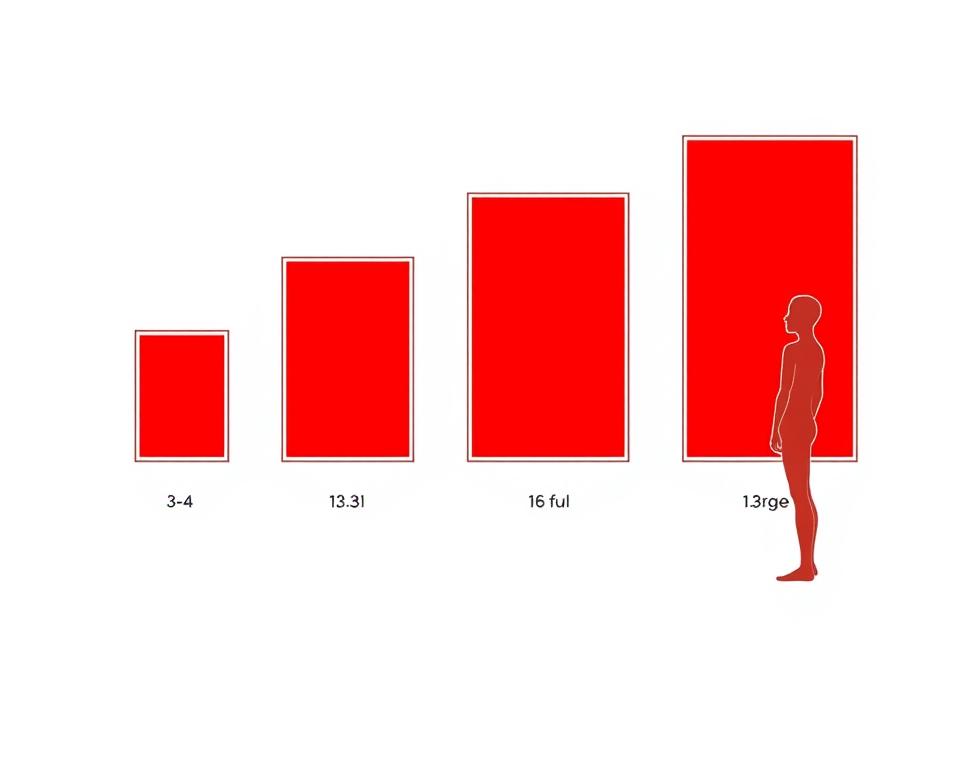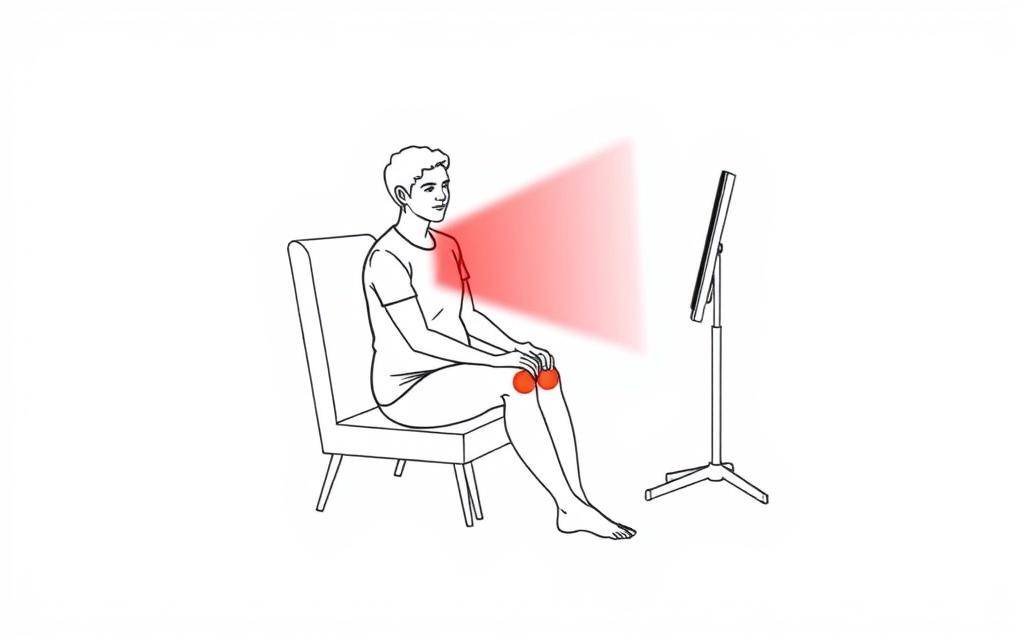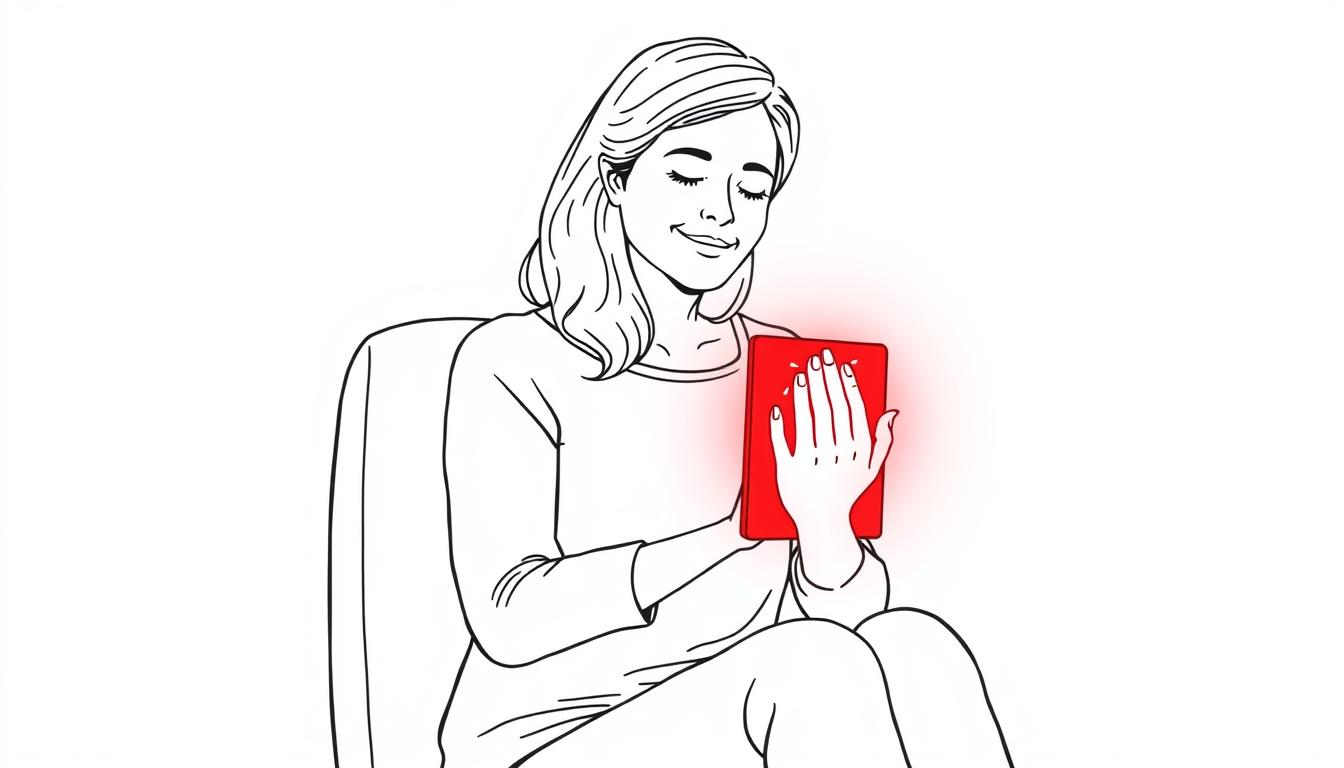Living with lupus means navigating a complex autoimmune condition that affects over 1.5 million Americans, 90% of whom are women. Despite conventional treatments, many patients continue searching for complementary approaches to manage their symptoms. Red light therapy (RLT) has emerged as a potential option worth exploring, with growing research suggesting anti-inflammatory benefits that may help address some lupus symptoms.
This guide examines the science behind red light therapy for lupus, how it might help manage symptoms, and what current research tells us about its effectiveness. We’ll also compare available device options to help you make an informed decision about whether this approach might complement your existing treatment plan.
Understanding Lupus and Its Challenges
Systemic lupus erythematosus (SLE) is a chronic autoimmune disease where the immune system mistakenly attacks healthy tissues throughout the body. This leads to inflammation that can affect multiple organ systems, including the skin, joints, kidneys, brain, and heart.
Common symptoms include:
- Joint pain and stiffness
- Skin rashes, including the characteristic butterfly rash
- Extreme fatigue
- Fever
- Sensitivity to sunlight
- Kidney problems
- Cognitive issues
Conventional treatments typically include anti-inflammatory medications, immunosuppressants, antimalarials, and corticosteroids. While effective, these medications often come with significant side effects, leading approximately 40% of lupus patients to explore complementary therapies alongside their prescribed treatments.
Important: Red light therapy should be considered a complementary approach, not a replacement for medical treatment. Always consult with your rheumatologist before adding any new therapy to your lupus management plan.
How Red Light Therapy Works for Lupus
Red light therapy uses specific wavelengths of red and near-infrared light (typically 630-850nm) to penetrate skin and tissue. Unlike ultraviolet light which can trigger lupus flares, these wavelengths are considered safe for most people with photosensitivity when used appropriately.
The Science Behind Red Light Therapy for Lupus
Red light therapy works primarily through its effects on cellular energy production and inflammation reduction. Here’s how it may benefit lupus patients:
Mitochondrial Support
Red light stimulates the mitochondria (cellular power plants) to produce more ATP (energy). This increased cellular energy can help repair damaged tissues and improve overall cell function, which may be particularly beneficial for energy-depleted lupus patients.
Anti-inflammatory Effects
Research by Hamblin et al. (2017) found that red light therapy can reduce inflammatory markers and modulate immune responses. Since lupus is characterized by chronic inflammation, this effect may help manage symptoms.
Improved Circulation
Red light therapy promotes vasodilation and increases blood flow, potentially helping to deliver oxygen and nutrients to affected tissues while removing waste products more efficiently.
Collagen Production
Studies show red light therapy can stimulate collagen production, which may help with skin manifestations of lupus. Research by Ablon (2018) demonstrated improvements in skin texture and appearance following red light treatments.

Research Evidence for Red Light Therapy and Lupus
While research specifically on red light therapy for lupus is still emerging, several studies provide promising insights:
“Low-level laser therapy demonstrated significant anti-inflammatory effects in autoimmune conditions similar to lupus, reducing key inflammatory markers and improving tissue repair.”
Key Research Findings
- Inflammation Reduction: A meta-analysis by Hamblin (2017) found consistent evidence that red light therapy reduces inflammatory markers across multiple autoimmune conditions.
- Joint Pain Relief: Hegedus et al. (2009) demonstrated that red light therapy reduced pain and increased mobility in patients with rheumatoid arthritis, which shares inflammatory mechanisms with lupus.
- Skin Improvement: Kazemikhoo and Mansouri (2015) reported successful treatment of resistant discoid lupus erythematosus (a form of cutaneous lupus) using low-level laser therapy, with reduced inflammation and improved skin appearance.
While these results are promising, it’s important to note that more large-scale clinical trials specifically focused on lupus are needed. The current evidence suggests potential benefits with minimal risks when used appropriately.

Comparing Red Light Therapy Devices for Lupus
When considering red light therapy for lupus, the device you choose matters significantly. Different models offer varying coverage areas, wavelength combinations, and features that may be more or less suitable for lupus symptoms.
Key Features to Consider
Wavelength Combination
Look for devices that offer both red (630-660nm) and near-infrared (810-850nm) wavelengths. This combination provides both surface-level treatment for skin manifestations and deeper penetration for joint pain.
Treatment Area Size
Larger panels allow for treating more of the body at once, reducing session time. For widespread lupus symptoms, larger panels may be more practical than small targeted devices.
Power and Irradiance
Higher irradiance (power density) means more effective light delivery and potentially shorter treatment times, but should be balanced with safety considerations.
Leading Device Options
Several manufacturers offer quality red light therapy devices that may be suitable for lupus symptom management:
| Device | Best For | Key Features | Considerations |
| RLT Home Total Spectrum Compact | Torso, upper legs, multiple joints | Seven wavelengths including 660nm and 850nm, pre-built modes for pain and inflammation | Excellent for treating multiple lupus-affected areas simultaneously |
| PlatinumLED BioMax | Customizable treatments | Adjustable intensity, multiple wavelengths | Strong customization options for varying sensitivity levels |
| Mito Red Light | Budget-conscious users | Good entry-level pricing, basic wavelength options | Fewer advanced features but solid performance |
| Joovv Go | Targeted treatment, travel | Portable design, rechargeable battery | Limited coverage area but excellent mobility |
| RLT Home Total Spectrum Ultra | Full-body treatment | Motorized stand, programmable height presets, 480 LEDs | Ideal for comprehensive treatment of widespread symptoms |
For lupus patients dealing with both joint pain and skin manifestations, the RLT Home Total Spectrum Compact offers an excellent balance of coverage area and therapeutic wavelengths. Its seven-wavelength mix provides comprehensive treatment options for various lupus symptoms. You can compare leading panels side-by-side here to find the best match for your specific needs.

Practical Guide to Using Red Light Therapy for Lupus
If you’re considering red light therapy as part of your lupus management plan, here’s how to approach it safely and effectively:
Getting Started
- Consult your rheumatologist – Always discuss adding red light therapy to your treatment plan with your specialist, especially if you have photosensitivity.
- Start with a test session – Begin with a short 2-3 minute exposure on a small area to check for any adverse reactions.
- Gradually increase exposure – If well-tolerated, slowly work up to recommended treatment times (typically 10-20 minutes per session).
- Maintain consistency – For best results, most studies suggest regular sessions 3-5 times per week.
- Monitor your response – Keep a journal of symptoms before and after treatments to track effectiveness.
The National Institute of Arthritis and Musculoskeletal and Skin Diseases (NIAMS) recommends that lupus patients discuss all complementary therapies with their healthcare providers. Learn more about managing lupus at the NIH lupus information page.
Treatment Protocols for Common Lupus Symptoms
For Joint Pain
Position the device 6-12 inches from affected joints. The Total Spectrum Compact works well for treating multiple joints simultaneously. Use near-infrared wavelengths (850nm) for deeper penetration into joint tissues.
For Skin Manifestations
For butterfly rash or discoid lupus lesions, position the device 12-18 inches from the skin. Red wavelengths (660nm) are most effective for surface-level skin concerns.
For Fatigue
Full-body exposure with a larger panel like the Total Spectrum Ultra may help address systemic fatigue. Morning sessions may be most beneficial for energy levels.
For Inflammation
Combination wavelengths (both red and near-infrared) can address inflammation at various tissue depths. Consistent daily sessions show the best results for chronic inflammation.

Safety Considerations for Lupus Patients
Potential Benefits
- Non-invasive therapy with minimal side effects
- No drug interactions with existing medications
- Can be used at home on your own schedule
- May reduce reliance on pain medications
- Addresses multiple symptoms simultaneously
Potential Concerns
- May trigger flares in highly photosensitive individuals
- Quality devices represent a significant investment
- Requires consistent use for ongoing benefits
- Limited large-scale clinical trials specific to lupus
- Not covered by most insurance plans
Special Considerations for Photosensitivity
Photosensitivity affects approximately 40-70% of lupus patients, making light-based therapies potentially challenging. However, red light therapy differs significantly from UV light exposure:
| Light Type | Wavelength | Effect on Lupus |
| Ultraviolet (UV) | 290-400nm | Often triggers flares, damages DNA, increases inflammation |
| Red Light | 630-660nm | Generally well-tolerated, may reduce inflammation |
| Near-Infrared | 810-850nm | Deepest penetration, typically safe for photosensitive individuals |
If you have significant photosensitivity, consider devices with EMF shielding like the RLT Home series, which features zero measurable EMF at treatment distance. Start with shorter sessions and gradually increase as tolerated.
Real Patient Experiences with Red Light Therapy for Lupus
While individual experiences vary, many lupus patients report benefits from incorporating red light therapy into their management plans:
Joint Pain Relief
“After two weeks of consistent use, I noticed significantly less stiffness in my hands and knees. It hasn’t eliminated my pain completely, but it’s made daily activities much more manageable.”
– Sarah, 42, living with lupus for 8 years
Skin Improvement
“My facial rash has been one of my most visible and frustrating symptoms. Red light therapy has noticeably reduced the redness and irritation, especially when I use it consistently.”
– Michael, 51, diagnosed with lupus 5 years ago
Energy Levels
“Fatigue has always been my worst lupus symptom. While red light therapy hasn’t eliminated it, I’ve noticed I have more energy on days following my treatments.”
– Elena, 38, managing lupus for 12 years
These anecdotal reports align with research findings suggesting benefits for inflammation, pain, and skin health. However, it’s important to remember that responses vary significantly between individuals.

Conclusion: Is Red Light Therapy Right for Your Lupus Management?
Red light therapy shows promising potential as a complementary approach for managing lupus symptoms, particularly for joint pain, skin manifestations, and fatigue. The current research, while still developing, suggests meaningful benefits with minimal risk when used appropriately.
For those considering adding red light therapy to their lupus management plan, devices like the RLT Home Total Spectrum series offer versatile options with multiple therapeutic wavelengths specifically beneficial for autoimmune conditions. The Total Spectrum Compact provides an excellent balance of coverage and functionality for most users, while the Total Spectrum Ultra offers comprehensive full-body treatment for those with widespread symptoms. You can compare leading panels side-by-side here to find the option that best fits your specific needs.
Remember that red light therapy should complement, not replace, conventional medical care for lupus. Always work with your healthcare provider to develop an integrated approach that addresses your unique symptoms and needs.
With the right device, proper technique, and realistic expectations, red light therapy may offer a valuable addition to your lupus management toolkit—potentially improving quality of life with minimal side effects.
— David, independent RLT researcher

Frequently Asked Questions About Red Light Therapy for Lupus
Can red light therapy trigger lupus flares?
Unlike UV light, which commonly triggers lupus flares, red and near-infrared light are generally well-tolerated by most lupus patients. However, individuals with extreme photosensitivity should approach with caution and always consult their healthcare provider before starting treatment.
How long does it take to see results from red light therapy for lupus symptoms?
Most patients report noticing improvements within 2-4 weeks of consistent use (3-5 sessions per week). Acute symptoms like joint pain may respond more quickly, while chronic issues like skin lesions may take longer to show improvement.
Is red light therapy covered by insurance for lupus treatment?
Currently, most insurance plans do not cover red light therapy devices for home use. Some physical therapy sessions that include red light therapy may be covered, but this varies by provider and plan. HSA/FSA funds may be eligible for use with a doctor’s recommendation.
Can I use red light therapy while taking lupus medications?
Red light therapy generally does not interfere with lupus medications. However, some medications may increase photosensitivity. Always inform your doctor about all treatments you’re using, including red light therapy, to ensure there are no concerns specific to your medication regimen.
What’s the difference between red light therapy and infrared saunas for lupus?
While both use forms of light, they work differently. Red light therapy delivers specific wavelengths directly to tissues without significant heat, focusing on cellular effects. Infrared saunas primarily work through heat, inducing sweating and circulation benefits. Some lupus patients find the heat of saunas can trigger symptoms, making targeted red light therapy potentially more tolerable.

